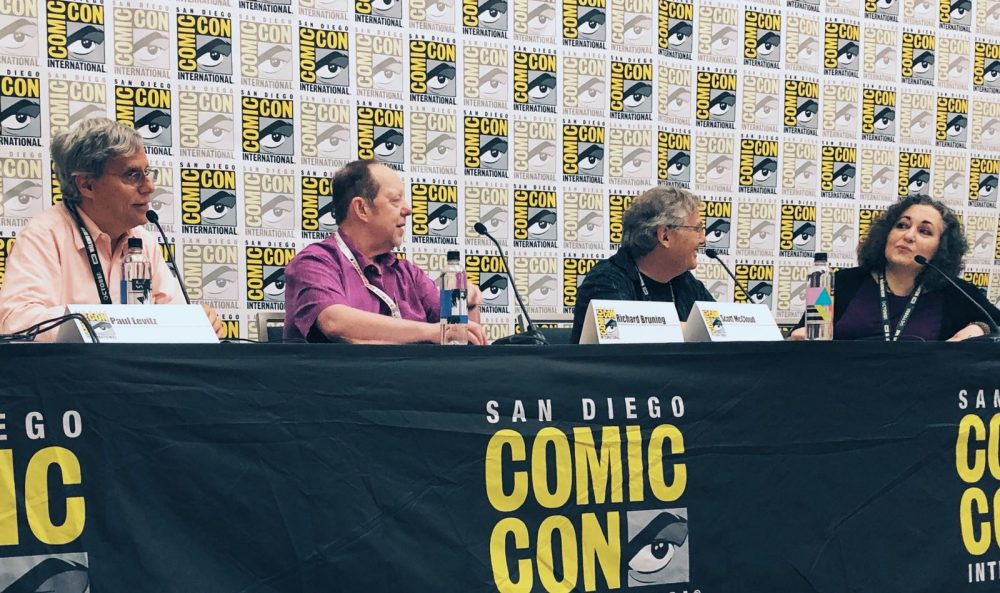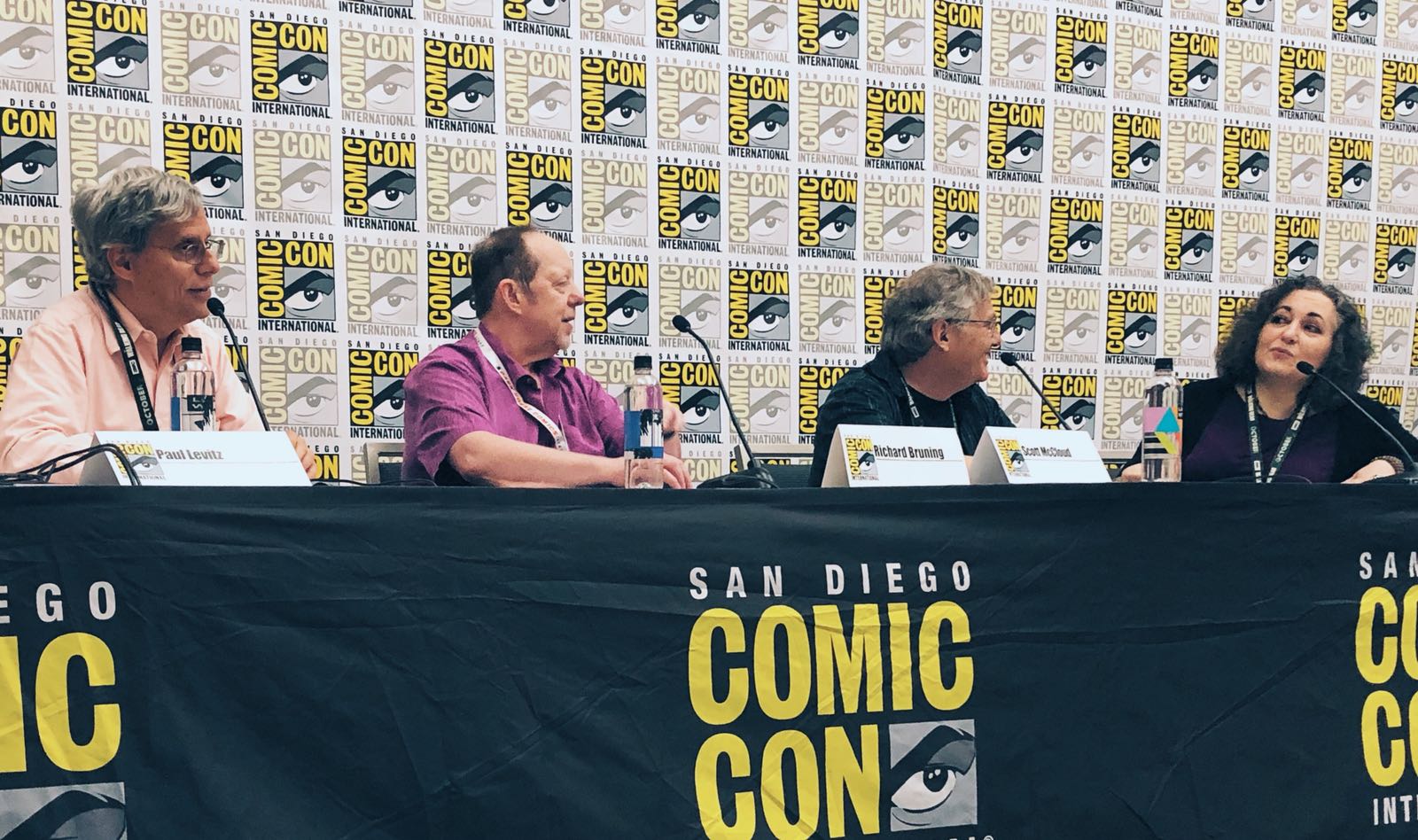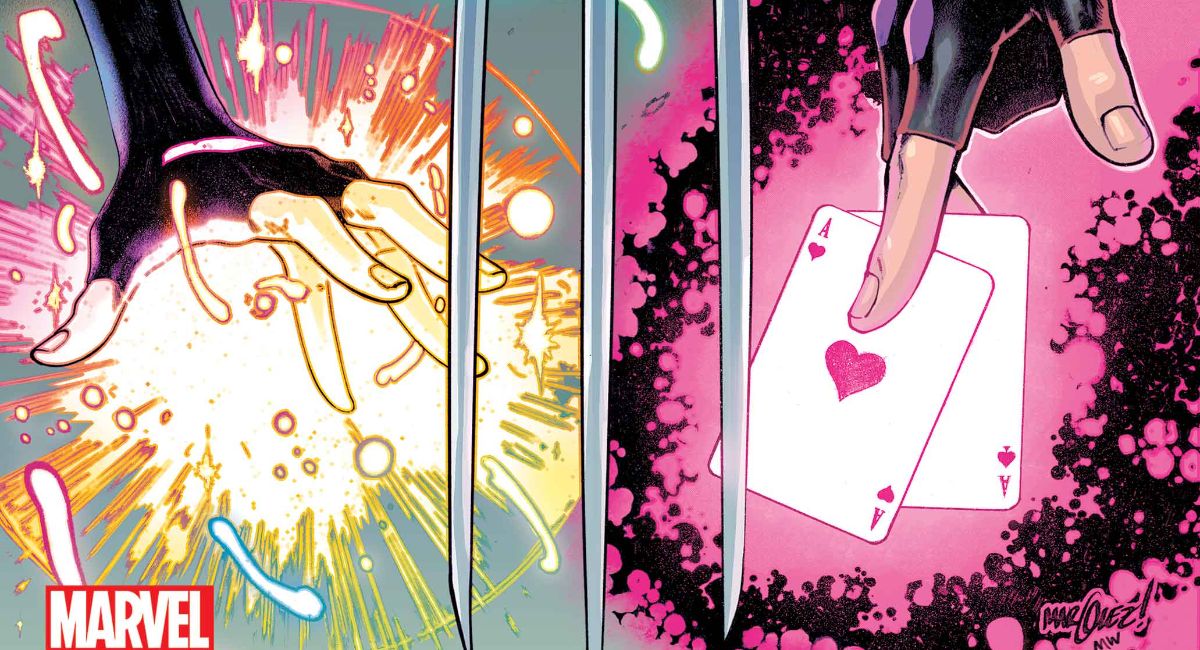Ever since Will Eisner’s A Contract with God, graphic novels have been leaving their indelible mark on comics. Editor and writer Paul Levitz (Brooklyn Blood, Will Eisner: Champion of the Graphic Novel) kicked off day two of San Diego Comic Con with a lively discussion about the past, present and future of graphic novels. Levitz was joined by special guests Scott McCloud (Understanding Comics) Emil Ferris (My Favorite Thing is Monsters) and Richard Bruning (Graphic Designer, Adam Strange: The Man of Two Worlds).

The panel began with a discussion of the graphic novel as form. McCloud was asked a question about how Eisner’s graphic novel demonstrated a striving towards something implicit, in terms of the comic form. “It helped us set aside our preconceptions of comics and decontaminate them.” McCloud added, “Eisner helped unpack the bottomless pit of small moments. He made of those small things something tremendous.”
Bruning says seeing Eisner’s physical printing of Contract With God helped him realize and come to terms with this new form. A form that looked so violently different to the comics and sequential art being made at the time. As an editor Bruning talked about the difficulty in breaking comic book publishers out of that traditional panel form. That, for Bruning, is part of the beauty of graphic novels.
Emil Ferris says graphic novels are a kind of magic spell, a rejection of the rules and an embracing of the wonder and beauty of openness. For Levitz what is so inspirational about Eisner was his audacity to be bold by being small. Levitz talked about the complexity of using characters that have backstories and how gorgeous it is to be able to recognize our humanity and pay deference to its beauty by using graphic novels.
Much of the panel centered around the intimacy of graphic novels and how Eisner’s work demonstrated the ability to expose the author, the reader, and the character. Speaking about how artists approach the blank page McCloud says many view the page with the architect of expectations that comes with creating. “The liberty that you have when approaching a blank page is actually very rare. Will saw the blank page whereas everyone else saw a series of rows.”
As Ferris relayed a story about how she approached the blank page as an artist and creator. She says she began the first 24-pages of her graphic novel on lined loose-leaf paper but switched soon after citing her desire to get out of what she called her ‘blue line prison.’
Ferris, whose sense of humor is laced with the kind of sarcasm those from the Midwest know well, told the story of her many failures in attempting to get her book published. When the book was completed the eight-hundred page books was too long for the original publishers. The woman Ferris had been working with allowed her to keep the advance money she had been offered so that she could go and pursue other publishers. After numerous other rejections, Ferris found her monsters among a field of villagers with Fantagraphics Books. The audience laughed at the reference to monsters to which Ferris quipped, “You think I’m kidding?”
As the panel progressed there was acknowledgment of the massive financial impact of graphic novels are having and how that knowledge is pushing each of these artists forward. Something that is important for these artists to see the graphic novel continue to transcend form and boundaries. McCloud says the graphic novels shouldn’t be a standard size or shape but rather should reflect the size of the story. “The form shouldn’t dictate the story. You are building a story, not building a package.”
An audience member asked Ferris, who had mentioned her poor eyesight earlier in the panel, for any recommendations. Ferris talked about how her father used to yell at her for working in low-light conditions. She then proceeded to recommend black seed oil and concoction of what she called a “really tragic recipe”.
The final audience question had to do with using graphic novels for teaching students literature. The question was geared towards McCloud. His advice? “Begin with a wordless comic (like The Arrival by Shaun Tan) then students do not have the option of treating the images as illustrations. Students have to recognize the fact that the stories, themes, and characters are all being conveyed through pictures. That way they don’t fall back into the old habit of writing about the things they would have written about if they had been reading prose.”
The hope for graphic novels is that they will continue to push us forward, continue to require us to investigate the form and structure of story and humanity.









